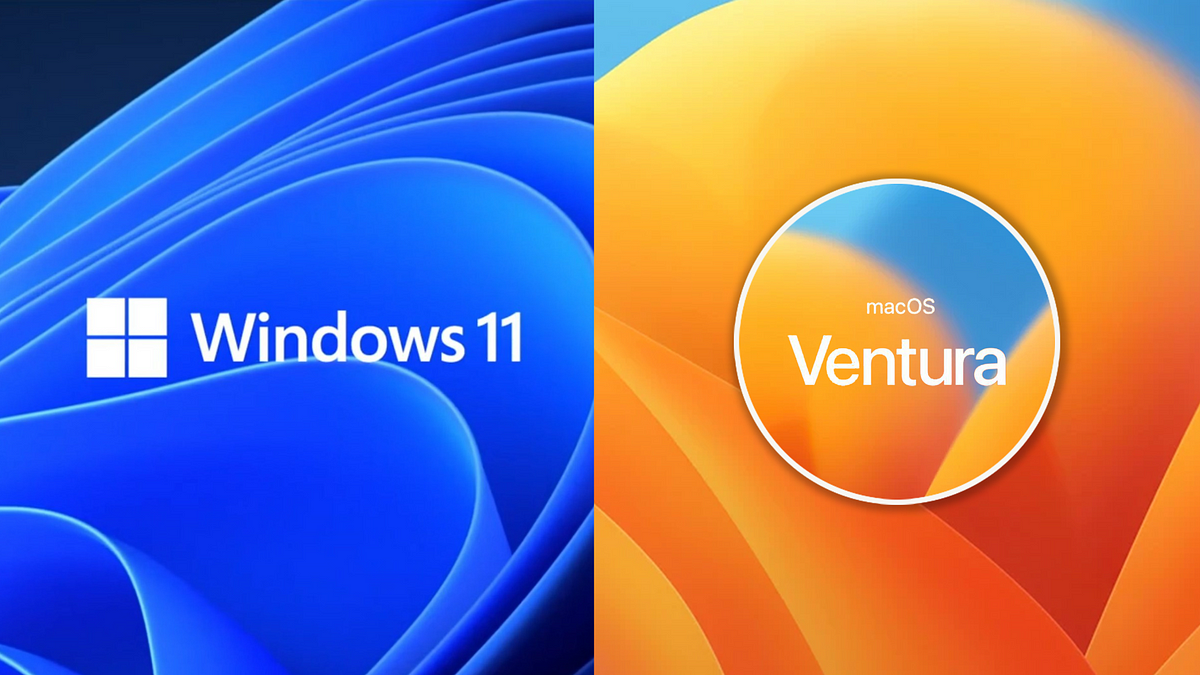Windows vs. Mac OS: A Glimpse into Future Developments

In the world of technology, operating systems are like the brains behind our digital experiences, always changing to keep up with what we need. Windows and Mac OS are two major players in this, and they’re both evolving. Let’s explore the new features and changes that are coming to Windows and Mac OS. Each one is going its own way into the future, and we’ll take a closer look at what to expect!

Windows: Navigating Innovation with Precision
Aesthetic Renaissance in Windows 11:
The recent debut of Windows 11 signals a deliberate departure from its predecessor, Windows 10. Characterized by a refined Start menu, softened corners, and a contemporary aesthetic, Microsoft’s latest operating system introduces a visual paradigm shift. This design overhaul is not merely cosmetic but seeks to enhance user interaction through an interface that seamlessly accommodates both seasoned Windows users and newcomers.
Integration Prowess of Microsoft 365:
Windows 11 is poised to deepen its integration with Microsoft 365, a suite synonymous with productivity tools. This integration extends beyond conventional boundaries, incorporating enhanced collaboration features, seamless integration of Teams, and improved compatibility with cloud-based services. The objective is to forge an ecosystem that seamlessly interconnects users, devices, and applications, enhancing overall efficiency.
Elevating Gaming Experience with DirectStorage:
Acknowledging the burgeoning significance of gaming, Windows is ushering in DirectStorage, a technological advancement promising accelerated load times and heightened gaming immersion. Leveraging the capabilities of NVMe SSDs, DirectStorage optimizes the retrieval of high-quality textures and assets, promising a discernible uplift in gaming performance on Windows platforms.
Android Applications Embrace the Windows Domain:
A noteworthy development is the integration of Android applications into the Windows ecosystem. Facilitated through the Microsoft Store, this integration expands the software repertoire available to Windows users significantly. Beyond acknowledging the ubiquity of Android applications, this move underscores a commitment to fostering a versatile computing environment.

Mac OS: Harmonizing Power and Elegance
Propelling Forward with Apple Silicon:
Apple’s transition from Intel processors to its proprietary Apple Silicon architecture stands as a transformative milestone for Mac OS. This strategic shift promises heightened performance, energy efficiency, and a seamless amalgamation of hardware and software. As Apple continues to refine its Silicon lineup, users can anticipate an evolution towards more potent and energy-conserving Mac devices.
macOS Monterey Unveils Universal Control:
The latest iteration, macOS Monterey, introduces a groundbreaking feature named Universal Control. This innovation facilitates seamless control over multiple Apple devices through a single mouse and keyboard. Emblematic of Apple’s dedication to creating a harmonious ecosystem, Universal Control signifies that the collective user experience transcends individual devices.
Privacy-Centric Advancements with Mail Privacy Protection:
Privacy emerges as a central theme with features such as Mail Privacy Protection. This feature shields user privacy by preventing senders from tracking email opens and masking IP addresses. As privacy concerns gain prominence, these features are positioned to be focal points in future macOS updates.
Catalyst Apps Paving the Way:
With the Catalyst framework, Apple is fostering the development of universal apps capable of seamlessly transitioning between Mac and iPad devices. This initiative promotes a unified app ecosystem, empowering developers to create applications catering to a broader audience. As Catalyst gains traction, users can anticipate a richer selection of apps optimized for diverse Apple devices.
The Confluence or Divergence of Paths?
While Windows and Mac OS maintain distinct identities with unique design philosophies and ecosystems, a notable convergence emerges in their shared pursuit of creating cohesive ecosystems. Windows aspires to seamlessly integrate Microsoft 365, whereas Mac OS places emphasis on the fluid interconnectivity of Apple devices through features like Universal Control.
As technological landscapes evolve, a compelling question surfaces: are we witnessing a convergence of operating systems, where the demarcations between Windows and Mac OS blur? The integration of Android apps on Windows and the universal app approach on Mac OS suggest a trajectory toward a more inclusive software landscape.
Conclusion: Navigating the Future Digital Landscape
In the ongoing saga of operating systems, Windows and Mac OS stand as vanguards, each crafting a unique narrative for the future. Windows 11’s visual metamorphosis, gaming allure, and Microsoft 365 integration underscore Microsoft’s commitment to a versatile and interconnected user experience. Conversely, Mac OS, with its transition to Apple Silicon, privacy-centric features, and emphasis on seamless device integration, reflects Apple’s dedication to a harmonious and powerful digital ecosystem.
The future holds promises of excitement for users of both Windows and Mac OS. Each operating system is scripting a story that offers a glimpse into a digital universe that is more interconnected, potent, and user-centric than ever before. As we navigate this unfolding future, the choice between Windows and Mac OS transcends mere preference; it becomes a discerning consideration of evolving features aligning with individual needs and a visionary understanding of the future of computing.
